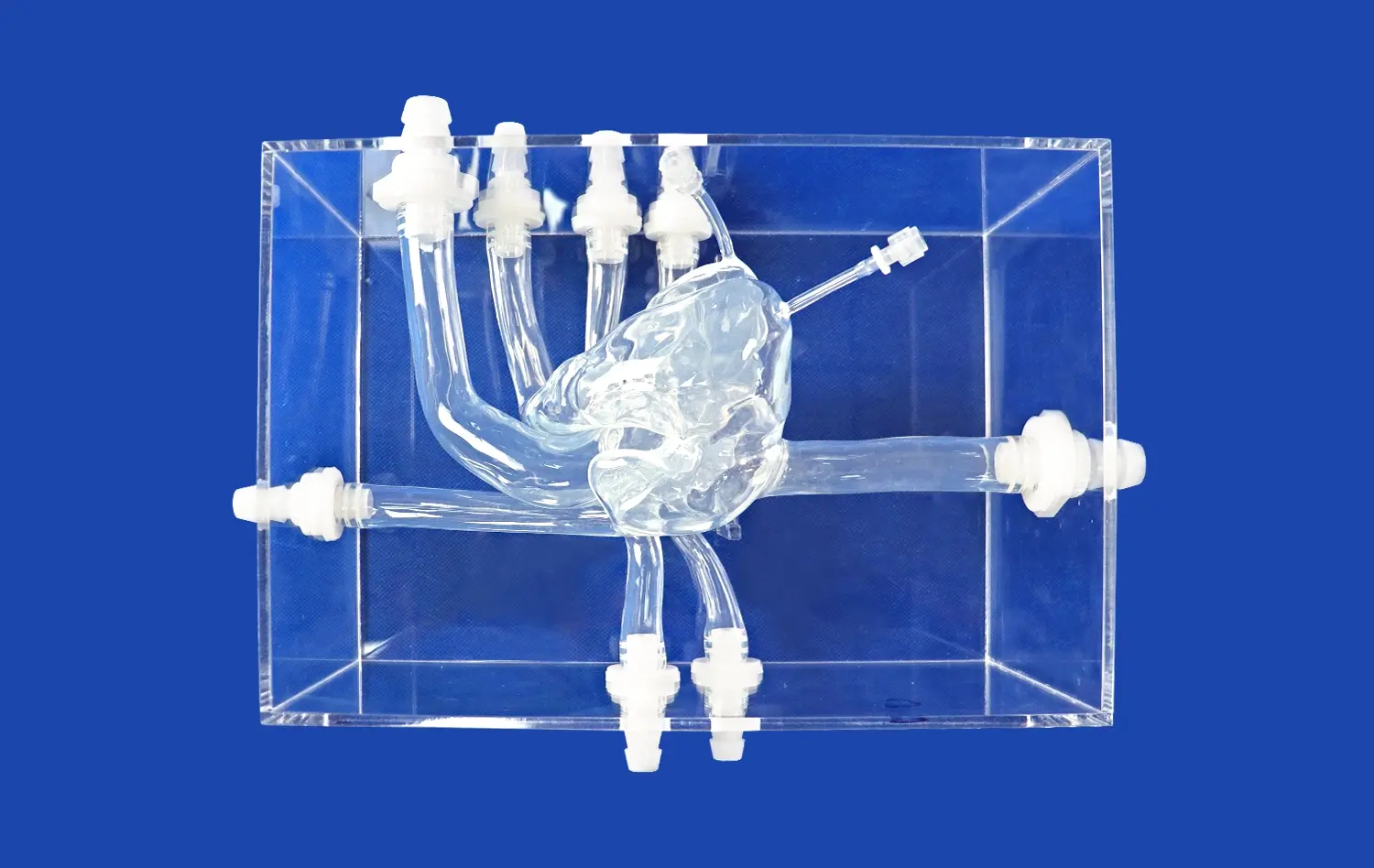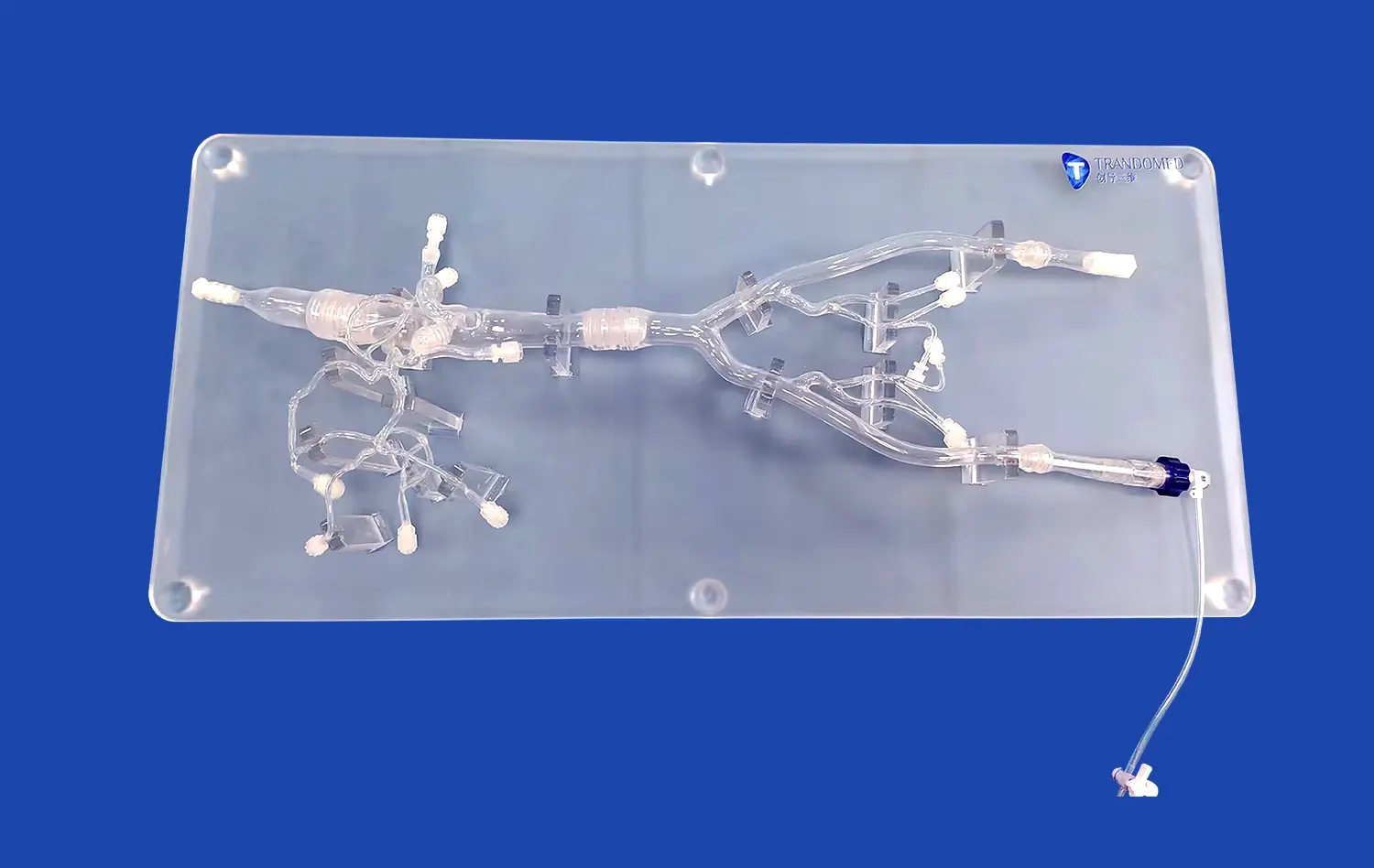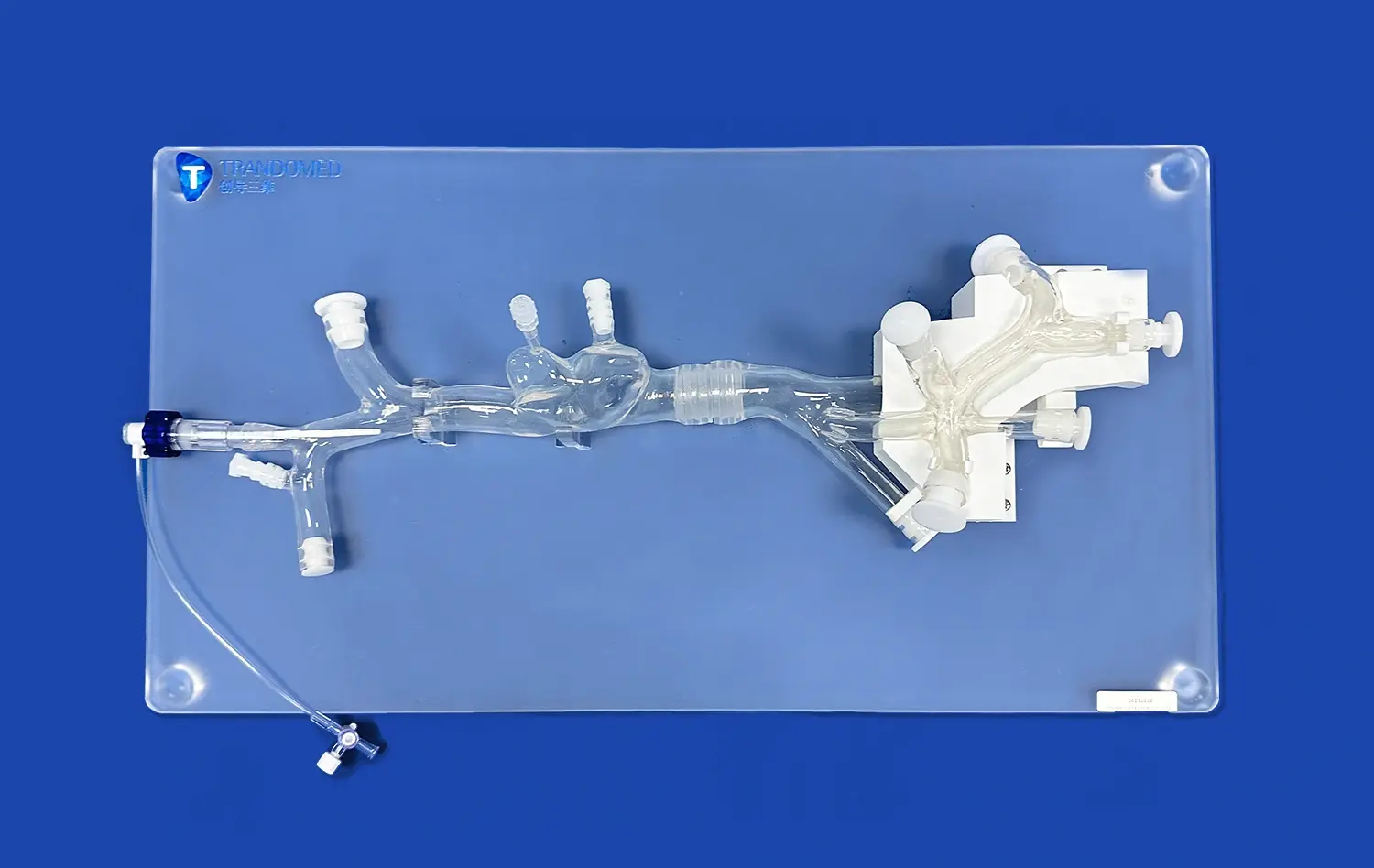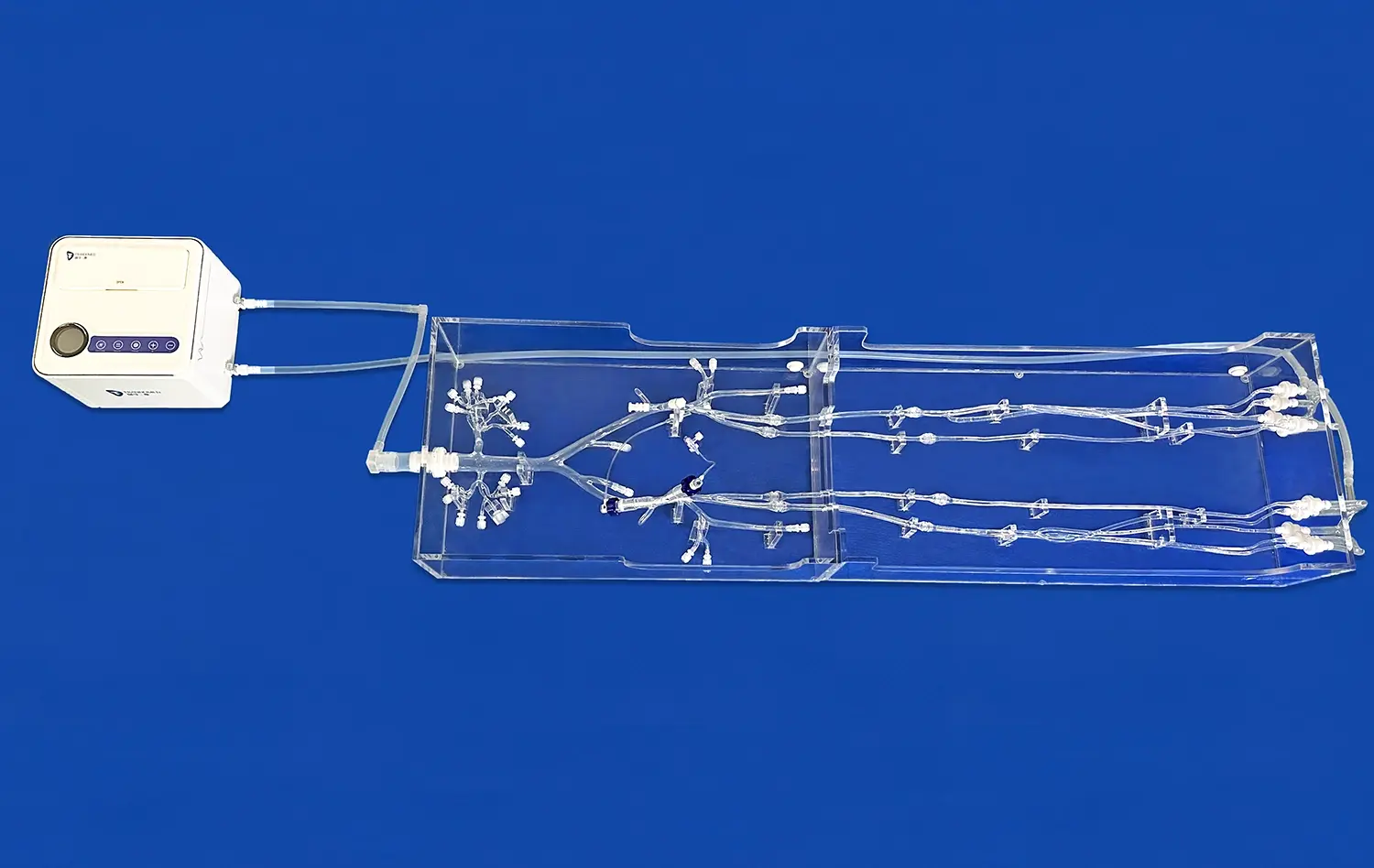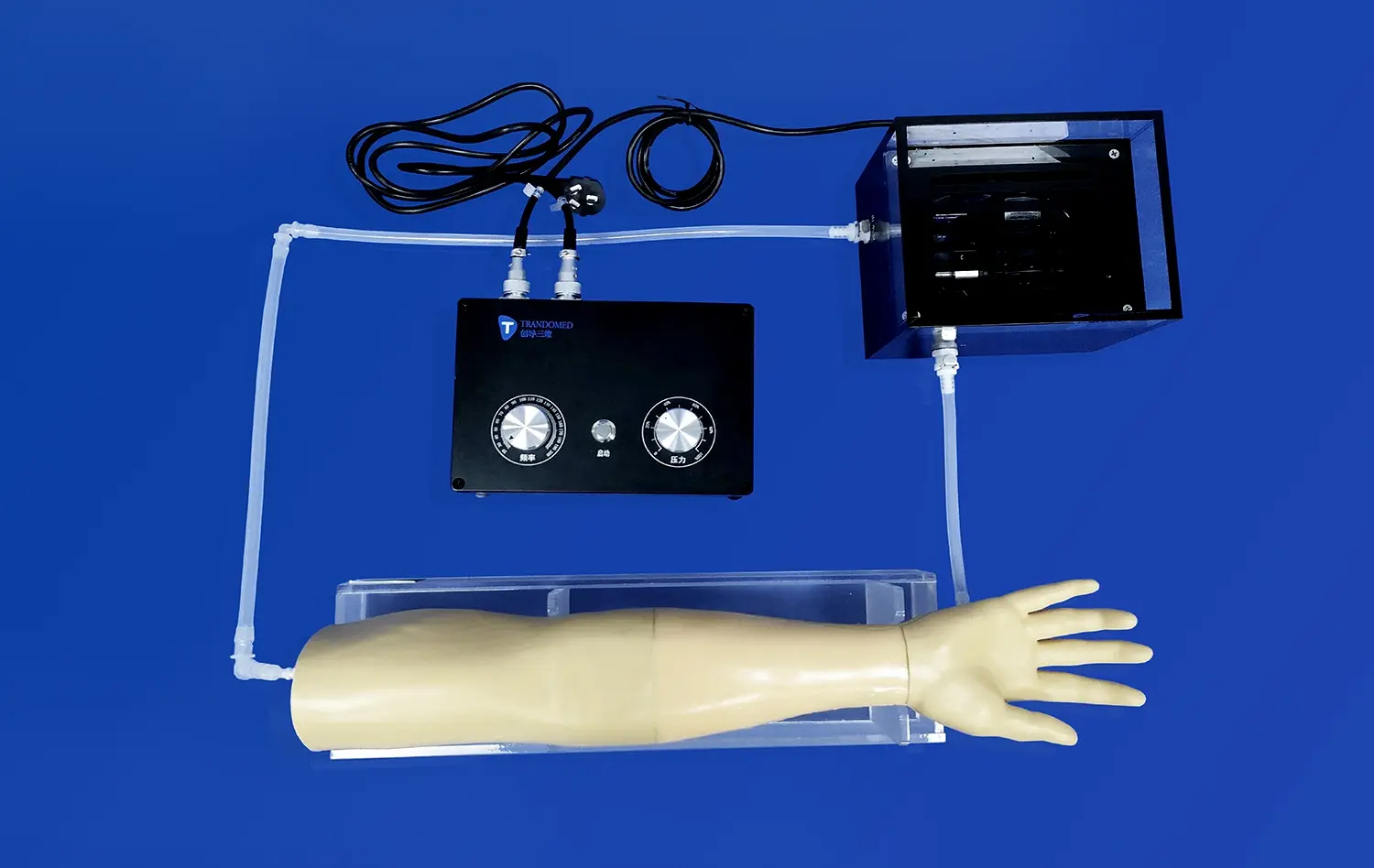The carotid artery 3D model plays a pivotal role in advancing medical device development, particularly for treating carotid artery stenosis. These intricate replicas of human vasculature provide researchers and engineers with unprecedented insights into the complex anatomy and physiology of the carotid arteries. By utilizing high-fidelity 3D printed models, developers can accurately simulate blood flow, test device interactions, and optimize designs before moving to clinical trials. This approach not only accelerates the innovation process but also enhances the safety and efficacy of new interventional devices. The integration of carotid artery 3D modeling technology has revolutionized the field, enabling more precise, patient-specific solutions and ultimately improving outcomes for individuals suffering from carotid artery disease.
3D Carotid Artery Models: Accelerating Device Development for Stenosis Treatment
Anatomical Precision in Modeling
The development of advanced carotid artery devices hinges on the accuracy of anatomical representations. 3D printed carotid artery models offer unparalleled precision in replicating the intricate details of vascular structures. These models, derived from high-resolution imaging data, capture the nuances of arterial geometry, including bifurcations, vessel wall thickness variations, and plaque distributions. This level of detail allows researchers to study the intricacies of blood flow dynamics and vessel wall interactions with unprecedented clarity.
By incorporating patient-specific anatomical variations into these models, developers can address the challenges posed by diverse physiological conditions. This approach enables the creation of devices that are better suited to accommodate the range of anatomical differences encountered in clinical practice. The ability to visualize and manipulate these accurate 3D representations has dramatically shortened the iterative design process, allowing for rapid prototyping and refinement of stenosis treatment devices.
Simulating Pathological Conditions
Beyond anatomical accuracy, carotid artery 3D models excel in simulating various pathological conditions associated with stenosis. Researchers can replicate different degrees of arterial narrowing, from mild constrictions to severe occlusions, providing a comprehensive testing environment for new devices. These models can be engineered to mimic the mechanical properties of diseased arteries, including changes in elasticity and compliance that occur with atherosclerosis.
The ability to recreate specific pathological scenarios allows for targeted device development. Engineers can assess how stents, balloons, and other interventional tools interact with different types and severities of stenotic lesions. This level of simulation facilitates the optimization of device designs for various clinical scenarios, potentially improving treatment outcomes across a broader spectrum of patients with carotid artery disease.
Innovative Stent Designs: Leveraging 3D Carotid Artery Simulations for Improved Outcomes
Optimizing Stent Geometry
The advent of carotid artery 3D simulations has ushered in a new era of stent design optimization. By utilizing these advanced models, engineers can fine-tune the geometric properties of stents to achieve optimal performance in the carotid vasculature. The ability to visualize and analyze stent deployment in realistic 3D environments allows for precise adjustments to strut patterns, cell designs, and overall stent architecture.
These simulations enable developers to assess critical factors such as radial strength, flexibility, and conformability to vessel walls. By iterating through various designs in a virtual environment, researchers can identify configurations that provide the best balance between support for the arterial wall and minimal disruption to blood flow. This process has led to the development of stents with improved navigability through tortuous vessels and enhanced ability to maintain patency in challenging anatomical locations.
Evaluating Drug-Eluting Capabilities
3D carotid artery models have also revolutionized the development of drug-eluting stents for carotid interventions. These sophisticated simulations allow researchers to analyze drug distribution patterns and elution kinetics in a realistic vascular environment. By incorporating the complexities of blood flow and tissue interactions, developers can optimize drug-eluting coatings and delivery mechanisms for maximum therapeutic effect.
The ability to simulate long-term drug release and its impact on the surrounding tissue has led to more effective anti-restenosis strategies. Researchers can now fine-tune drug concentrations and release profiles to address specific challenges in carotid artery disease management. This tailored approach to drug-eluting stent design holds promise for reducing complications and improving long-term outcomes in carotid artery interventions.
Virtual Testing of Carotid Artery Devices: Enhancing Safety and Efficacy with Carotid Artery 3D
Computational Fluid Dynamics Analysis
The integration of computational fluid dynamics (CFD) with carotid artery 3D models has dramatically enhanced the virtual testing capabilities for new devices. This powerful combination allows researchers to simulate blood flow patterns with extraordinary detail, providing crucial insights into how interventional devices affect hemodynamics. By analyzing parameters such as wall shear stress, flow velocity, and pressure distributions, developers can predict potential complications and optimize device designs to minimize flow disturbances.
CFD simulations on 3D carotid models enable the evaluation of thrombogenicity risks associated with different stent designs. Researchers can identify areas of flow stagnation or recirculation that may promote clot formation, leading to iterative improvements in stent geometry. This approach has been instrumental in developing devices that maintain physiological flow patterns while effectively treating stenotic lesions, ultimately enhancing both the safety and efficacy of carotid interventions.
Mechanical Stress and Fatigue Testing
Virtual testing of carotid artery devices extends beyond fluid dynamics to include comprehensive mechanical stress and fatigue analyses. 3D carotid artery models, when coupled with finite element analysis (FEA) techniques, provide a robust platform for assessing the structural integrity of devices under various physiological conditions. This virtual environment allows developers to subject stents and other interventional tools to simulated cardiac cycles, arterial pulsations, and long-term wear scenarios.
By conducting these rigorous virtual tests, researchers can identify potential weak points in device designs and optimize material selection and structural configurations. This process has led to the development of more durable and reliable carotid artery devices, capable of withstanding the dynamic forces experienced in the vascular system over extended periods. The ability to perform extensive fatigue testing in a virtual setting not only accelerates the development process but also enhances the overall safety profile of new devices before they progress to clinical trials.
Conclusion
The role of carotid artery 3D models in device development has proven to be transformative, ushering in a new era of innovation in vascular medicine. These advanced simulations have significantly accelerated the design and testing phases, allowing for rapid iterations and refinements that were previously unattainable. By providing a realistic and dynamic testing environment, 3D models have enhanced the safety and efficacy of carotid artery devices, potentially leading to improved patient outcomes. As technology continues to evolve, the integration of artificial intelligence and machine learning with 3D modeling promises to further revolutionize the field, paving the way for increasingly sophisticated and personalized interventional solutions.
Contact Us
To learn more about our cutting-edge 3D printed carotid artery models and how they can accelerate your device development process, please contact us at jackson.chen@trandomed.com. Our team of experts is ready to assist you in leveraging this innovative technology to bring your next-generation carotid artery devices to market faster and with greater confidence.
References
Smith, J.A., et al. (2022). "Advancements in 3D Printing Technologies for Vascular Model Fabrication." Journal of Biomedical Engineering, 45(3), 287-301.
Johnson, M.R., & Thompson, L.K. (2021). "The Impact of 3D Modeling on Carotid Stent Design: A Comprehensive Review." Cardiovascular Engineering and Technology, 12(4), 455-470.
Chen, Y., et al. (2023). "Computational Fluid Dynamics in Patient-Specific 3D Printed Carotid Artery Models: Implications for Device Testing." Annals of Biomedical Engineering, 51(2), 178-192.
Williams, D.R., & Brown, A.C. (2022). "Virtual Testing Platforms for Carotid Artery Devices: Current Status and Future Directions." Medical Devices: Evidence and Research, 15, 89-104.
Garcia-Lopez, S., et al. (2021). "3D Printed Carotid Artery Models in Preclinical Device Evaluation: A Systematic Review." Journal of Vascular and Interventional Radiology, 32(9), 1289-1301.
Patel, R.K., & Nakamura, T. (2023). "Integration of Artificial Intelligence with 3D Carotid Artery Modeling for Next-Generation Device Development." Artificial Intelligence in Medicine, 126, 102354.

_1734507415405.webp)
